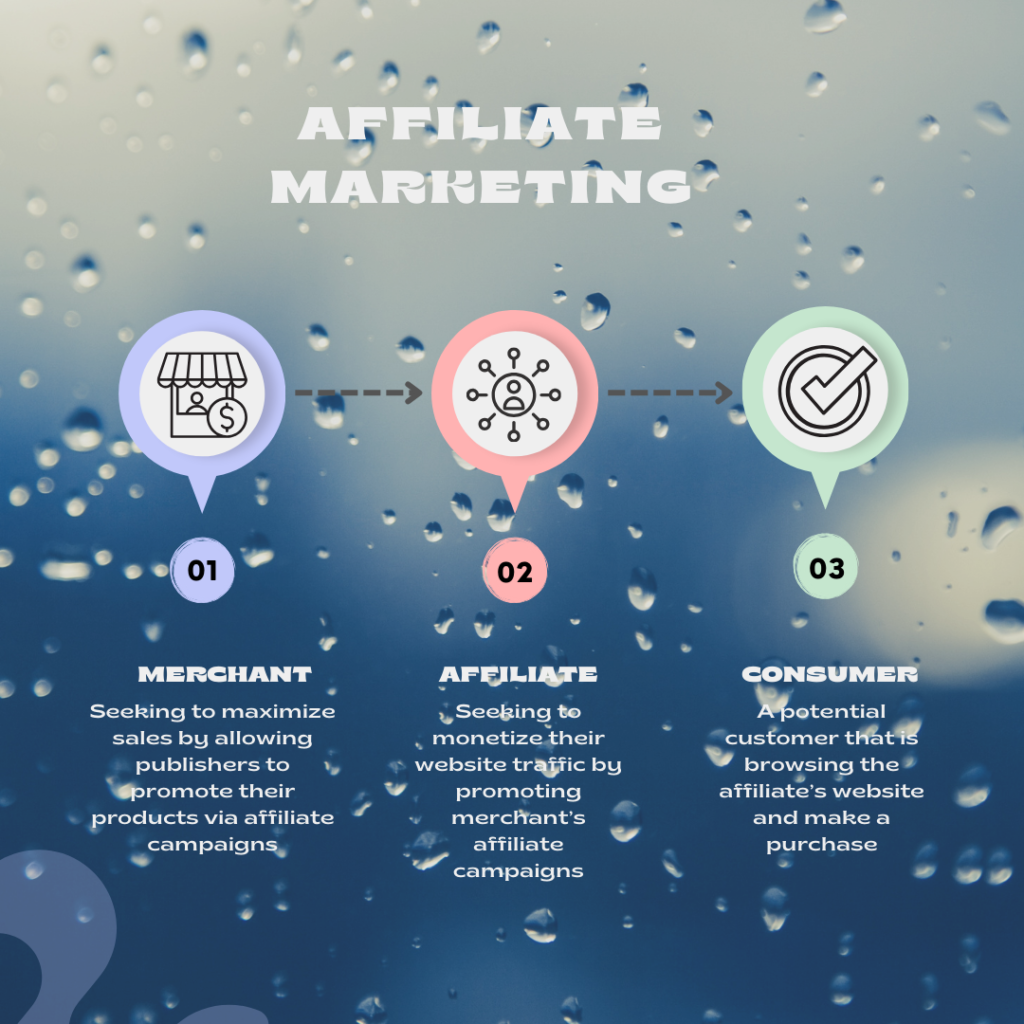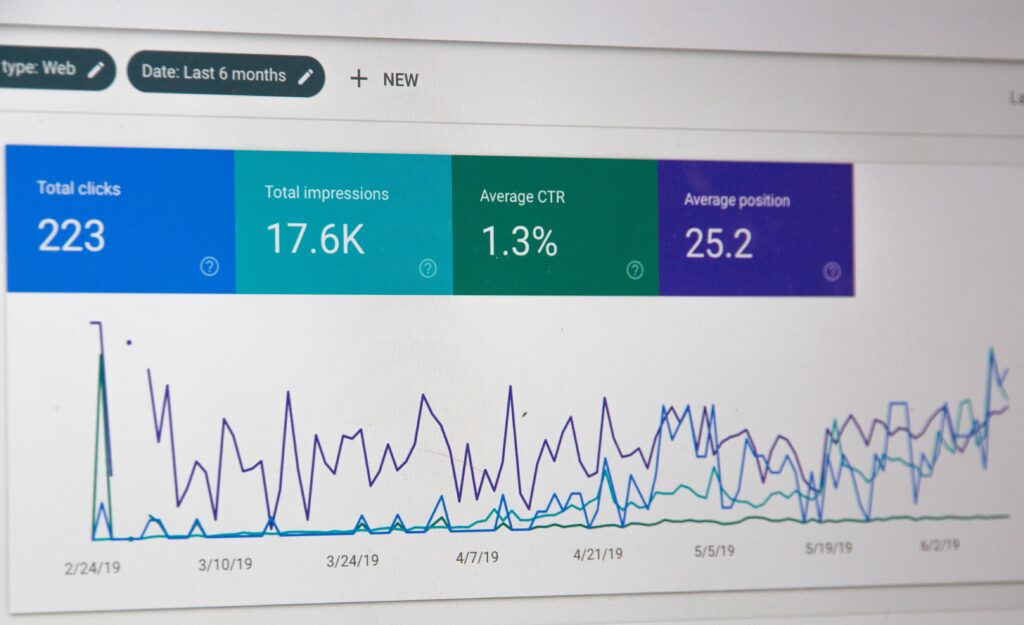What is Affiliate Marketing:
The cycle where an association will pay a commission to a partner to advance their items either through a site, blog, email, or virtual entertainment. Partner promoting brings the force of organization impacts to mark outreach, involving current clients and representatives as a channel for showcasing effort.
Some associate projects are “coherence” programs in that they expect that the client
pay a month to month charge for enrollment or for utilization of that item.
Can You Start Affiliate Marketing with Zero Capital ?
Certainly! There are numerous free platforms and affiliate networks accessible at little or no cost. However, building a substantial online following requires dedicated efforts, such as blogging, social media posting, and similar strategies.
How Affiliate Marketing Works

Affiliate marketing operates by distributing the tasks of product marketing and creation among multiple parties, harnessing the skills of diverse individuals to enhance marketing effectiveness and offering contributors a share of the profits.
When individuals click on your link, a small file, commonly referred to as a cookie, is placed on their device. This cookie typically contains an expiration date, guaranteeing that you receive compensation even if they delay their purchase.
This collaborative approach involves three key parties:
Sellers and product creators
Affiliates or advertisers
Consumers
How to Get Started
To consider being an affiliate marketer, you have to plan what stage you will use to advance items or potentially benefits. Websites or blogs are a successful channel for advertising and advancing as it permits the blogger, filling in as a specialist, to offer a viewpoint about the contribution.
Subsequent to recognizing a stage, find a particular classification that you are OK with or inspired by. An engaged fragment can a likely assists you with drawing in a devoted purchaser base. Research associate projects and pick at least one in view of your requirements, whether it be procuring high commissions or creating more traffic. Finally, build a strong and intriguing substance around the contributions and work to expand traffic to your site or blog.
Step 1: Choose Your Niche
Your niche represents the category you aim to discuss and promote. To distinguish yourself amidst the multitude of websites today, my advice is to be specific. Instead of opting for a broad niche like food, consider something more focused, such as grilling. This approach not only helps in building a more targeted audience but may also enhance your search engine optimization (SEO) efforts.
To identify a suitable niche, ponder over these four questions:
What am I proficient at?
What activities do I enjoy?
What topics pique my curiosity?
What do others acknowledge as my strengths?
Emphasizing the significance of selecting a passion-driven niche is crucial. Succeeding in affiliate marketing requires creating substantial content. Opting for a niche aligned with your interests is vital; otherwise, it may become challenging to persevere during tougher times.
Reflecting on my own experience, when I established my first site, I chose to delve into one of my hobbies—breakdancing. Despite my initial lack of knowledge about marketing, I managed to grow it to an estimated 2K monthly visits.
Step 2: Decide on a content Platform
Affiliate marketing can be pursued on various platforms, giving you flexibility. These platforms include:
Website
YouTube
Social media (e.g., Instagram, TikTok)
Newsletter
Podcast
The choice of method depends on your preference and, at times, the preference of your niche. For instance, those learning breakdancing may prefer videos, so even if you prefer writing, running a YouTube channel might be a more suitable option.
However, we recommend building a website and utilizing search engine optimization (SEO) to achieve high rankings on Google. This approach facilitates the consistent generation of passive search traffic, translating to regular clicks on affiliate links.
TIP: Regardless of the platform you choose, it’s important to disclose the inclusion of affiliate links. The Federal Trade Commission (FTC) mandates transparency when earning income from an endorsement. If you’re creating a website, consider dedicating a standalone page or incorporating the disclosure in the footer of your site.
Step 3: Find Affiliate Program to Join

Aligning yourself with products you genuinely like can significantly enhance your chances of success in affiliate marketing. Your enthusiasm and willingness to work play crucial roles. While it’s not always possible to be fully delighted with every product, having a good understanding can help generate enthusiasm or even passion. Take the time to familiarize yourself with the product, read more about it, and ideally, use it. Even if you encounter a product that doesn’t perfectly fit your profile, strive to learn as much as possible. In the realm of affiliate marketing, you have the freedom to choose products that resonate with your belief. Selling what you love can transform it from a mere job into a fulfilling endeavor.
Promote Products Related to Your Content: While it might be apparent to some, emphasizing the selection of products closely tied to your content’s central theme is crucial. Although you can think creatively and broaden your scope, maintaining relevance to your content is essential. For instance, if your blog revolves around dog care, consider going beyond advertising solely dog care products. Explore opportunities to promote events for dog owners, pet insurance, fitness apps designed for working out with dogs, and more.
Satisfy Your Target Audience’s Desires: Understanding your subscribers’ desires is a continuous process, even if you’ve known them for an extended period. Analyzing your target audience’s desires thoroughly makes it easier to achieve successful affiliate sales. Create a customer portrait as close to a real person as possible, and consider surveying your audience about the products they desire most. Conduct polls through email or encourage comments to gain valuable insights. If you’re still building your target audience, study social networks to identify the problems your competitors’ audience faces. Success in affiliate marketing comes when you find programs that address your target audience’s issues.
Commission Structure and Affiliate Payouts: When selecting affiliate programs, consider the commission structure and payouts, which are essential aspects. Avoid the common mistake of solely chasing the highest affiliate commissions. Higher commissions are often set on products with a low sales rating or a high cost of lead acquisition, while lower payouts may indicate that a product sells well with a relatively low cost per lead. To make informed decisions, visualize the bigger picture when choosing affiliate programs.
To illustrate the importance of commission structure, consider a straightforward example. Imagine you have two affiliate products (product A and product B) priced the same. You sold 9 products A with a 1% commission per product and only one product B with a 10% commission. Surprisingly, the product with the lower commission resulted in more earnings due to the higher number of affiliate sales.
Consider High-Priced Products: Opting for affiliate programs with more expensive products can yield better returns, even with fewer sales. For instance, selling five products priced at $1000 each is equivalent to selling ten products priced at $500 each. If you have confidence in your target audience and believe that the affiliate program effectively addresses people’s problems, don’t hesitate to promote pricier goods. Some affiliate programs may also reward you for customers’ repeat purchases of the same product, so be sure to explore such incentives.
Vendor Reputation & Support: Prioritize more experienced vendors when selecting affiliate programs. Established brands with a solid reputation and popularity can ensure higher traffic. While it’s not advisable to disregard new vendors, especially if they have attractive offers, consider the track record and reputation of merchants.
Another critical factor related to merchants is the level of support they provide. Choose vendors who offer guidance on issue resolution. Quality affiliate programs provide relevant marketing materials, including landing pages, banners, and ad copies.
Before committing to a partnership with a vendor, request reports on their previous performance. Advertisers typically maintain statistics on their performance from affiliate marketing networks or partner programs, aiding you in identifying which affiliate programs excel at converting visitors into sales.
Step 4: Create Content and Drive Traffic to your Website or Blog
Achieving success with your affiliate site hinges on the creation of high-quality content seamlessly integrated with relevant affiliate links. Avoid the pitfall of blindly curating products solely from Amazon or Clickbank’s best sellers. Take the extra step to ensure that your content serves to address and solve your readers’ problems. By prioritizing the needs and concerns of your audience, your affiliate links will naturally complement the value you provide, fostering a more authentic and engaging user experience.
Increase Your Affiliate Commission with These 5 Steps

1 Branch Out With Different Products and Services.
To maximize affiliate marketing results, it’s crucial to expand beyond selling ebooks. While ebooks may offer higher commissions due to their low overheads, they limit the market significantly, as not everyone purchases them. Physical products remain the top sellers online. Branch out by selling diverse items through platforms like Amazon, alternative affiliate programs, or direct manufacturer deals. This approach not only boosts sales and income but also allows offering higher-priced products. For instance, marketing a college MBA course or gaming laptops through Amazon Associates can result in substantial profits, with the potential to earn over $100 from a single sale.
2 Simplifying Affiliate Marketing Tools
If managing numerous products and services on your website becomes challenging, especially concerning tracking and optimizing earnings, consider utilizing affiliate tracking tools like Trackanomics or Genius Link. These tools streamline the process of adding different affiliate accounts and generating links for each product. Notably, they offer performance tracking for each link created. Both tools come with convenient Chrome plugins, enabling you to navigate to product pages effortlessly and generate links with a simple click. While Trackanomics has a higher cost at $500 per month, beginners may opt for the more budget-friendly Genius Link. This choice provides insight into the lucrative nature of affiliate marketing for major brands.
3 Use Top 10 Products List
Shift your marketing focus from targeting internet entrepreneurs to attracting a broader audience through effective SEO strategies. Consider creating top 10 lists, leveraging great SEO practices to draw in regular customers. For instance, if you aim to showcase expensive gaming laptops, capitalize on the high demand for top-tier graphics cards like the RTX 2080. This sought-after component ensures the laptops are premium and attract customers willing to make substantial purchases. Utilize tools like Keywordtool.io for keyword research, revealing key phrases such as “RTX 2080 laptops” with a significant search volume of 6,600. This indicates a strong buying intent among users searching for these products. Enhance your content with bullet points and SEO techniques, increasing the likelihood of your link appearing in search engine results with a rich snippet. Crafting compelling articles in this manner will not only boost your online visibility but also contribute to higher conversion rates.
4 Build Audience
By implementing the outlined strategy, selling numerous products from your site becomes feasible without requiring a dedicated audience. However, it is strongly advisable to invest time in cultivating a loyal audience. Building trust with your audience elevates you to the status of a thought leader and influencer, significantly impacting your conversion rates. When individuals know and trust your insights, they are more likely to heed your product recommendations, appreciating your style and the relationship you’ve built. Efforts should be directed at delivering consistently exceptional content in your niche and maintaining a robust social presence. Prioritize relationship-building and effective communication to make followers feel acquainted with you. When creating content, aim for originality and focus on subjects that ignite your passion. This distinguishes you from rehashing outdated or low-quality content, ensuring a fresh and compelling perspective. Becoming a thought leader necessitates a deep understanding of your subject and avoiding mere content replication. Establish a strong brand, understand your target demographic, and avoid attempting to appeal to everyone. Following these guidelines will lead to rapid growth and a significant increase in engagement
5 Make use of PPC
Now, you can boost revenue by combining sales from long-term readers and first-time visitors from Google. To enhance this strategy, consider incorporating PPC (Pay Per Click) advertising from platforms like Google and Facebook. With PPC, you pay for ads only when someone clicks them, providing a fixed cost per visitor to your site. Understanding your conversion rate and profit per conversion enables you to develop a strategic plan, ensuring a profitable return on investment
Advantages and Disadvantages of Affiliate Marketing
Affiliate marketing presents significant benefits for both the advertising company and the affiliate marketer. The company leverages cost-effective advertising through the creative efforts of affiliates, while the affiliate earns additional income and incentives. The return on investment is notable, with the company only paying for converted traffic, and any advertising costs, if incurred, are borne by the affiliate.
In the evolution of affiliate marketing, companies initially paid for cost per click or cost per mile on banner ads. As technology advanced, the focus shifted to commissions on actual sales or qualified leads. However, early affiliate programs faced challenges like fraud, where clicks and impressions could be manipulated by software.
Modern affiliate programs now incorporate strict terms and conditions to regulate lead generation. Prohibited methods, such as adware or spyware installation redirecting search queries, are explicitly outlined. Some programs even prescribe guidelines for discussing a product or service before validating an affiliate link.
An effective affiliate marketing program necessitates careful planning. Clear terms and conditions, especially when payment is for traffic rather than sales, are essential. The potential for fraud exists, including squatting on misspelled domain names to earn commissions, using fake information in online forms, and purchasing AdWords on company-ranked search terms. Vigilant monitoring and rule enforcement are critical.
Despite challenges, a well-managed affiliate marketing program offers access to motivated, creative individuals who can effectively promote products or services to a global audience.
Pros
Can start with no capital
Passive income potential
Variety of options
Flexibility
Access to broader audience
Cons
Time and effort needed
No guarantee of inventory
High volume of competition
Choosing the right product or service
Affiliate Program you can Start From
1 Clickbank
2 Amazon Associate
3 HubSport
4 AWeber
5 Fiverr
6 JVZoo
7 DigiStore24
8 ConverKit
9 Thinkific
10 Kajabi
11 Teachable



